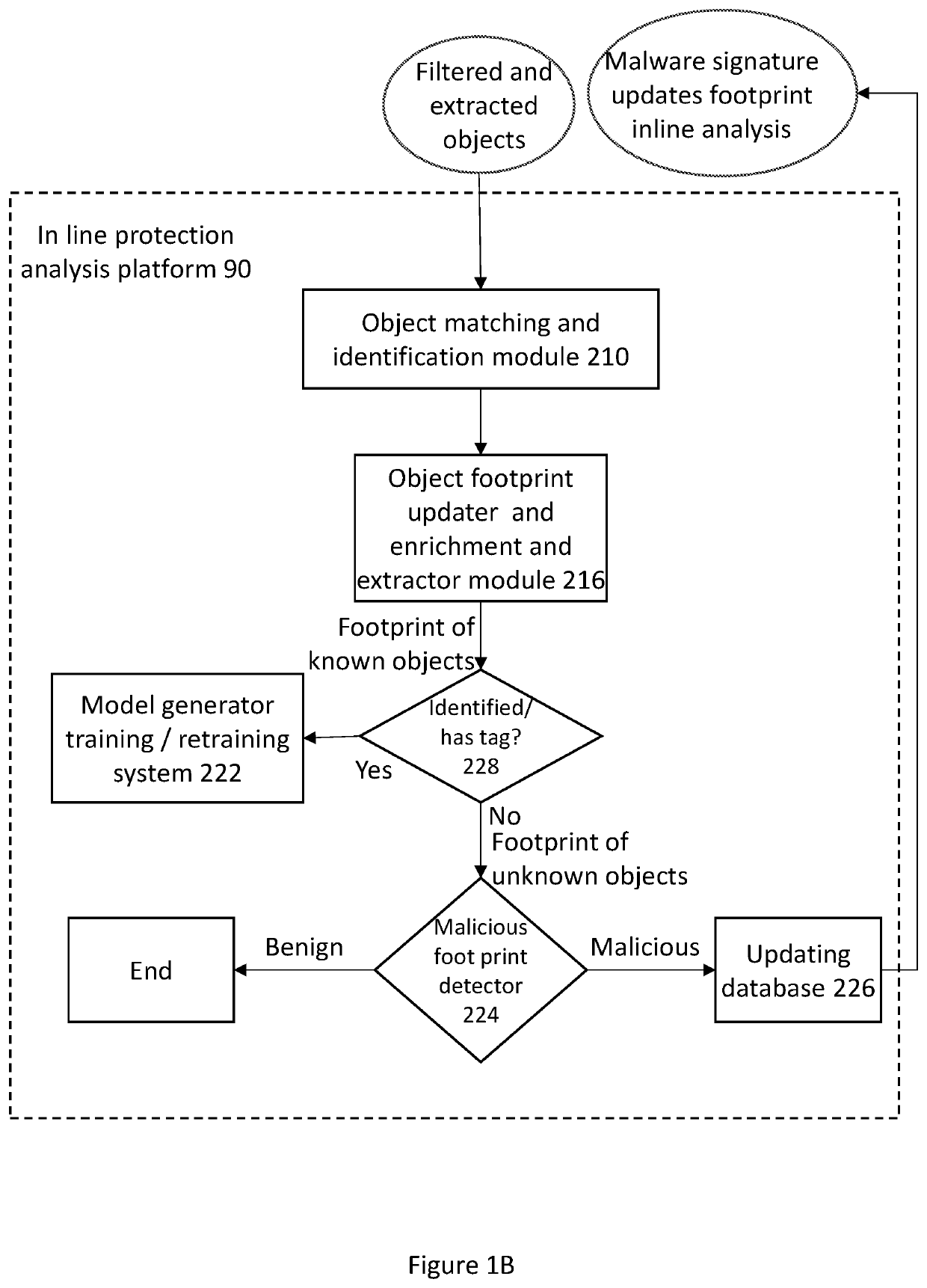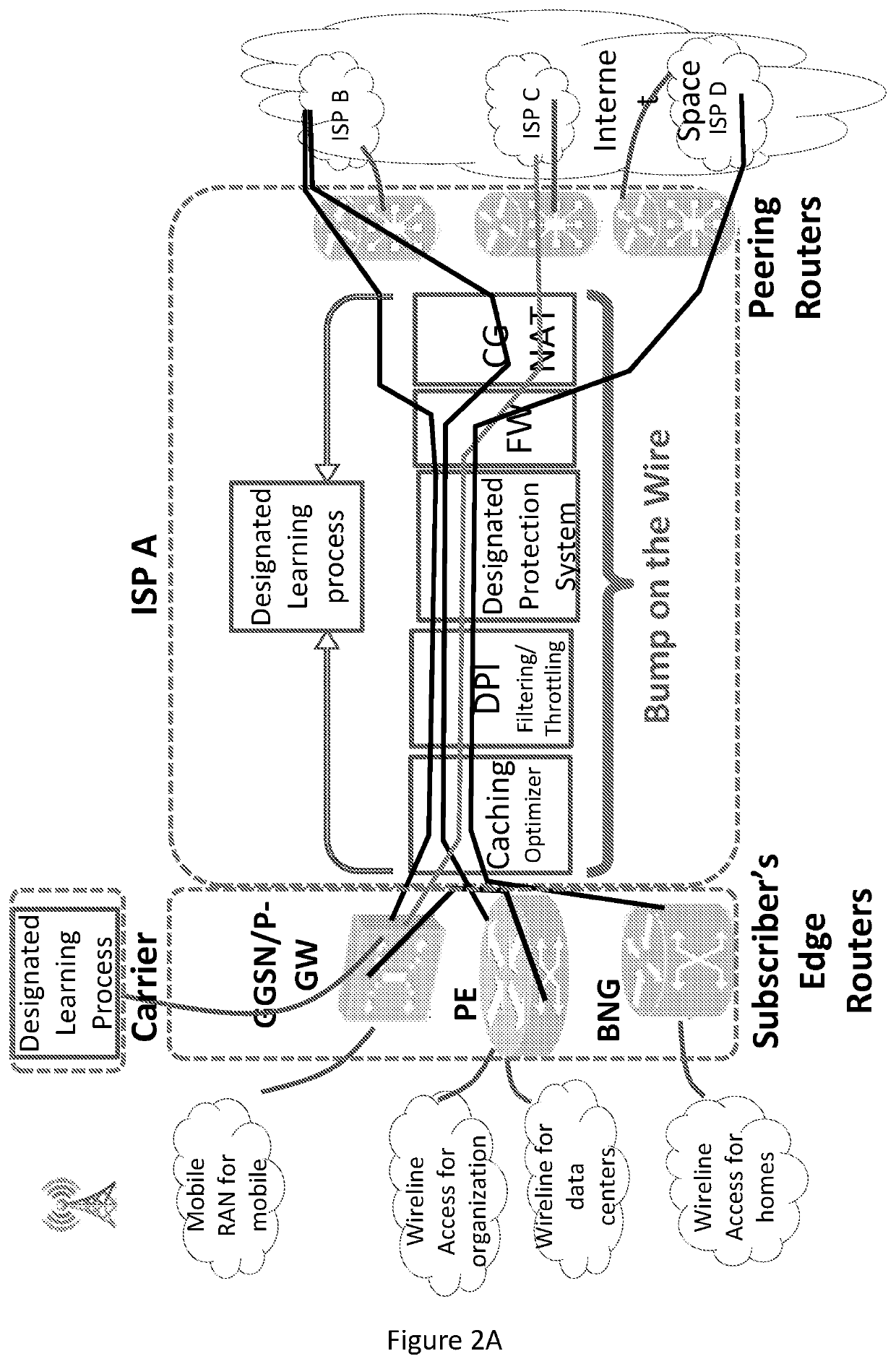Method and system for classifying data objects based on their network footprint
a data object and network footprint technology, applied in the field of detecting new cyber threats, can solve the problems of high false alarm rate of anomaly based malware detection approach, insufficient customer side protection with static and dynamic analysis and anomaly detection, and inability to adapt to the growing cyber threat of cyber security solutions in the market, so as to improve protection, improve malware detection capabilities, and reduce detection time
- Summary
- Abstract
- Description
- Claims
- Application Information
AI Technical Summary
Benefits of technology
Problems solved by technology
Method used
Image
Examples
Embodiment Construction
[0082]Before explaining at least one embodiment of the invention in detail, it is to be understood that the invention is not limited in its application to the details of construction and the arrangement of the components set forth in the following description or illustrated in the drawings. The invention is applicable to other embodiments or of being practiced or carried out in various ways. Also, it is to be understood that the phraseology and terminology employed herein is for the purpose of description and should not be regarded as limiting.
[0083]Definitions
[0084]The term “Object” as referred in the present invention—may include any digital piece of information or software that can be replicated, stored on magnetic, optical or electronic storage, and transmitted through a communication network. Examples: an image in jpg format, an executable binary file, an HTTP request, Java scripts, and etc.
[0085]The term “Known object” as referred in the present invention define an object whic...
PUM
 Login to View More
Login to View More Abstract
Description
Claims
Application Information
 Login to View More
Login to View More - R&D
- Intellectual Property
- Life Sciences
- Materials
- Tech Scout
- Unparalleled Data Quality
- Higher Quality Content
- 60% Fewer Hallucinations
Browse by: Latest US Patents, China's latest patents, Technical Efficacy Thesaurus, Application Domain, Technology Topic, Popular Technical Reports.
© 2025 PatSnap. All rights reserved.Legal|Privacy policy|Modern Slavery Act Transparency Statement|Sitemap|About US| Contact US: help@patsnap.com



